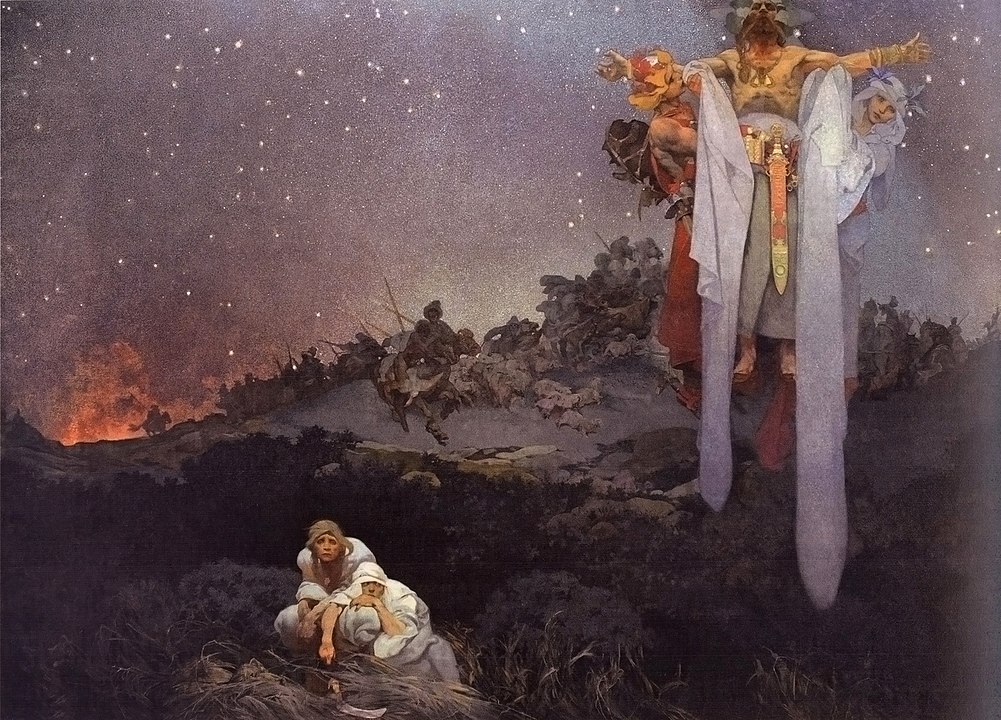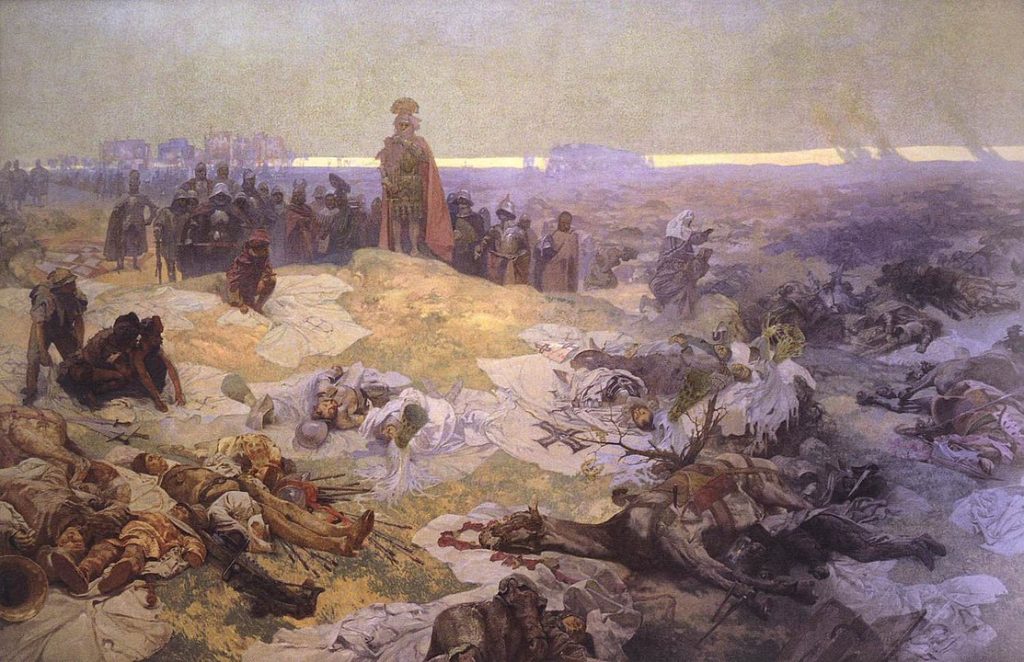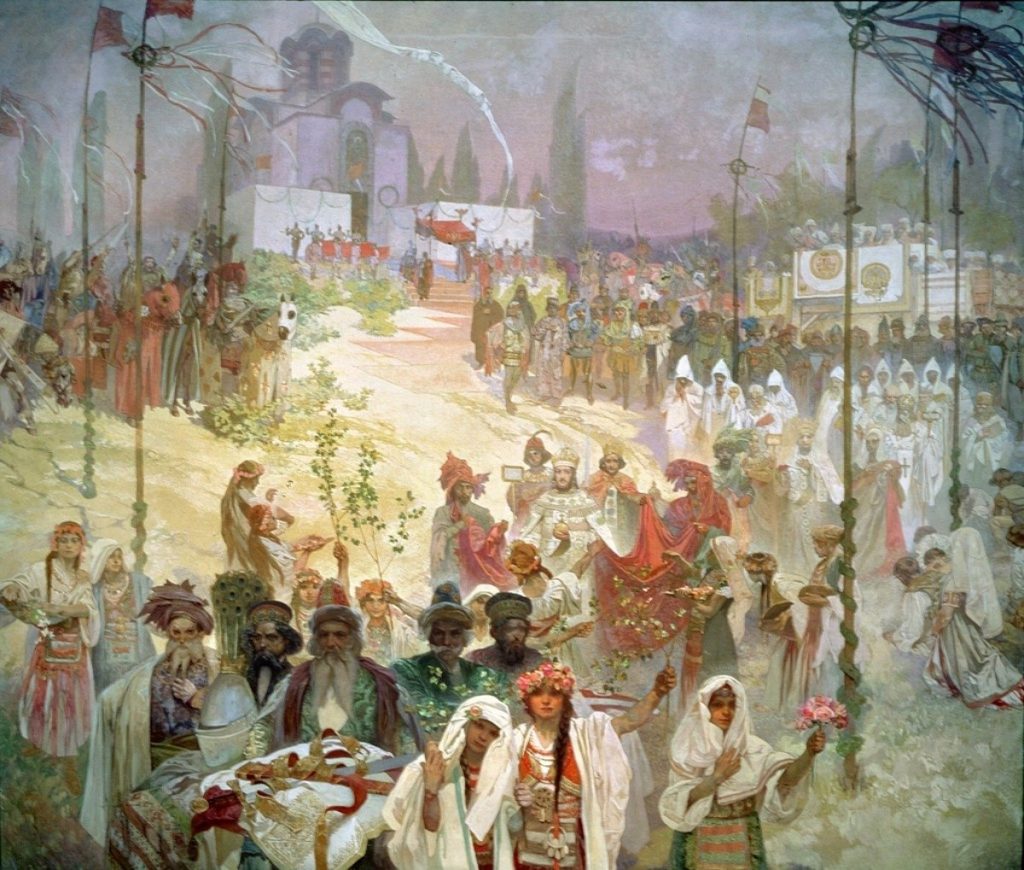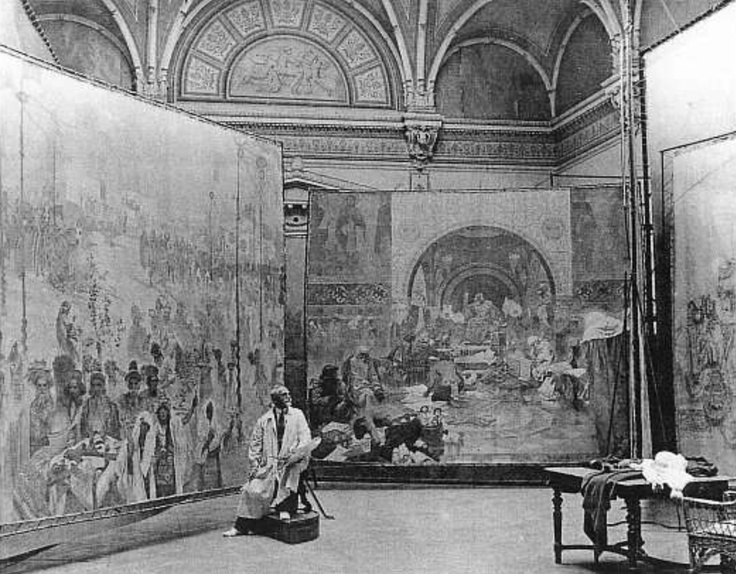The City of Prague has to prove that it properly acquired Alfons Mucha’s Slav Epic, according to a new decision by Judge Martina Tvrdková of the Prague 1 District Court. She is resolving the long-running dispute over the ownership of the 20-painting cycle between Prague and John Mucha, the painter’s descendant.
“Prague has to prove that it has properly retained the Slav Epic and must provide evidence that it was a true and fair tenure, under the weight of a failure to observe the burden of proof,” Judge Tvrdková said.
Acquisition by
retention requires the legitimate holding of a thing in good faith
for a period prescribed by law, in this case three years.

John Mucha and his
attorney claim the ruling is good news. They say it can be difficult
for the city to prove their retention because they did not meet build
an exhibition hall for the painting cycle. This side claims the hall
was a basic donation condition set by Art Nouveau artist Alfons
Mucha. The lack of a purpose-built exhibition hall has long been at
the center of their case.
“If the court
ruled in our favor, the inheritance proceedings would be resumed. It
is entirely within the intentions of the Supreme Court’s decision,”
Mucha’s lawyer František Vyskočil said, according to the Czech News
Agency (ČTK). The Czech Supreme Court in 2018 found the original
verdict in favor of the city was not adequately justified.

Attorney Roman
Felix, representing the city, does not see the ruling as a setback.
“It’s not a surprising decision for us. We will prove that the
retention was still in force under the General Civil Code,” he
said, referring to the standard that was in force from 1811 to 1950.
Felix said that the issue of the exhibition hall is not relevant to the fact that Prague properly acquired the Slav Epic. “I strongly suggest that the action be dismissed,” he said.
Alfons Mucha, who
died July 14, 1939, in his will named his wife, Marie, as heir. The
will does not mention the Slav Epic, which may indirectly show that
the epic was not part of Alfons Mucha’s estate.

Marie Chytilová
Muchová died in 1959, leaving Jiří Mucha and Jaroslava Muchová as
heirs. Documents from this time mention 29 paintings owned by Marie
Muchová, some of which were in the depository of the National
Gallery. The Slav Epic is not listed among them.
The District Court
has been dealing with the issue of ownership of the epic since 2017.
It dismissed John Mucha’s lawsuit because the original owner of the
paintings was not the painter, but American patron Charles Crane, who
commissioned the epic and donated it to Prague.
The judgment was
upheld in appeal proceedings by the Municipal Court in Prague. But
this verdict was set aside in 2018 by the Supreme Court in Brno, and
the case was send back to the District Court. A new District Court
decision could be announced in early April.

The Slav Epic was
painted between 1910 and ’28. Mucha devoted the latter half of his
artistic career to this work. The idea was formed in 1899, while he
was working on the design for the interior of the Pavilion of
Bosnia-Herzegovina, which had been commissioned by the
Austro-Hungarian government for the Paris Exhibition of 1900. In
preparation, he traveled widely through the Balkans, researching the
history and customs of the Slavs.
A key role in
creating the paintings was played by Mucha’s American patron
Charles Crane, who offered him $100,000 to finally paint the works.
The Slav Epic was
created in Mucha’s rented studio at Zbiroh castle, The finished
canvases were turned over to the City of Prague as they were
completed.
Some of the paintings were displayed at the end of 2018 and start of 2019 in Prague’s Obecní dům and in Brno, South Moravia, following a successful tour of Japan. The entire epic was last displayed in Prague at Veletržní palác in 2016. Current plans call for it to be temporarily returned to Moravský Krumlov.












 Reading time: 3 minutes
Reading time: 3 minutes 
































